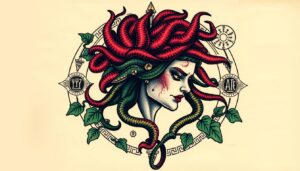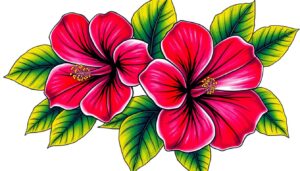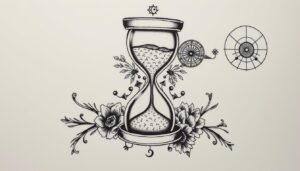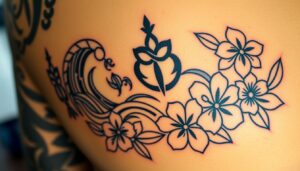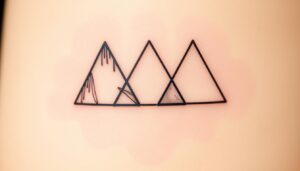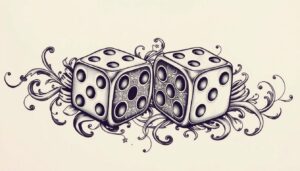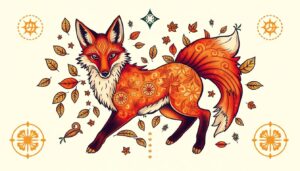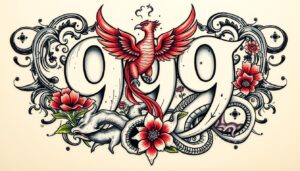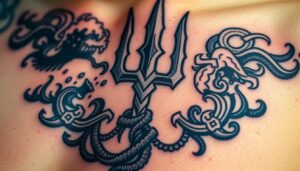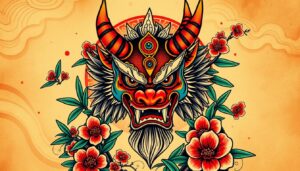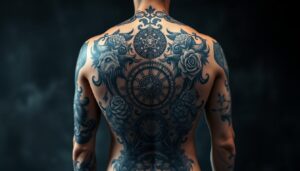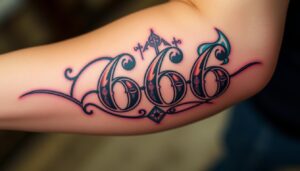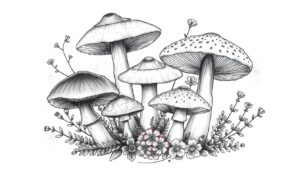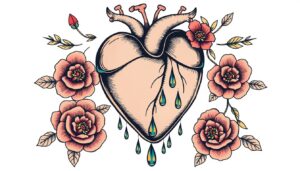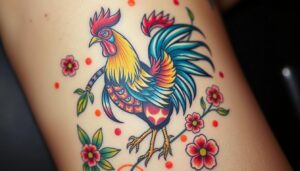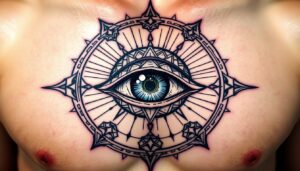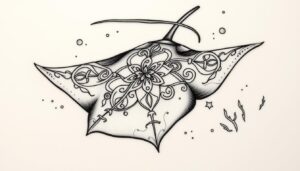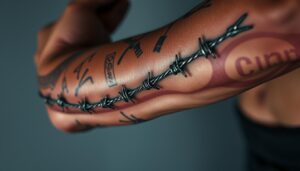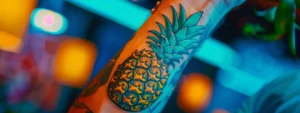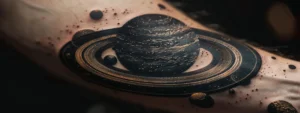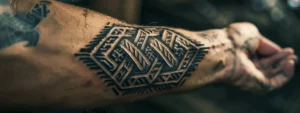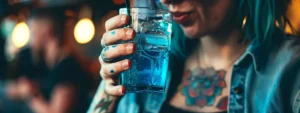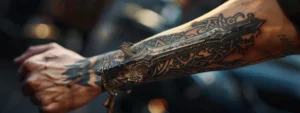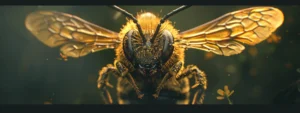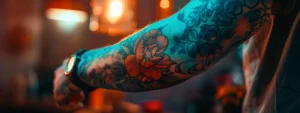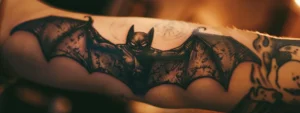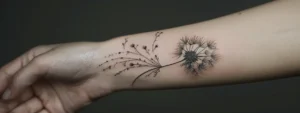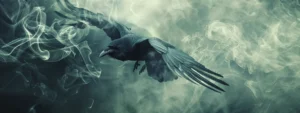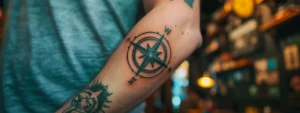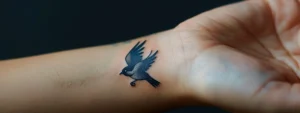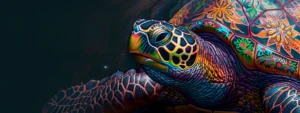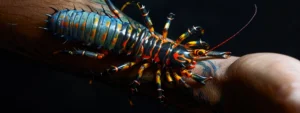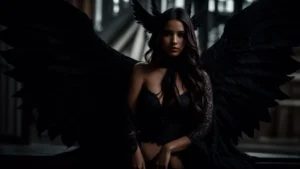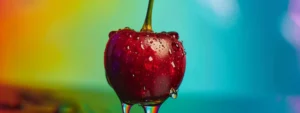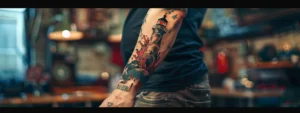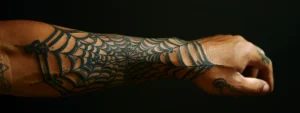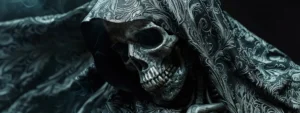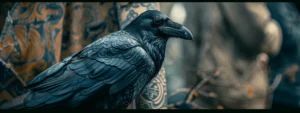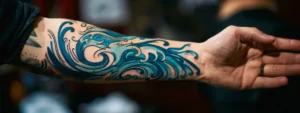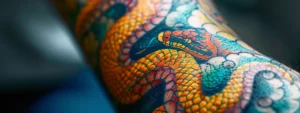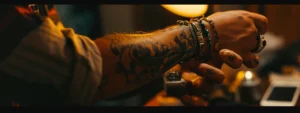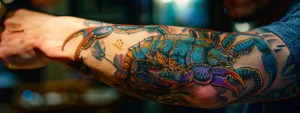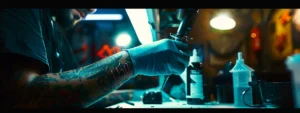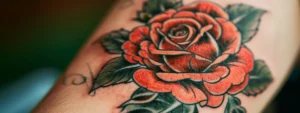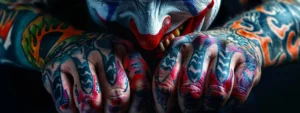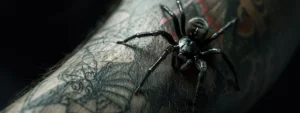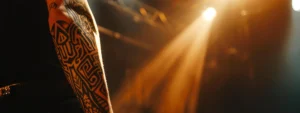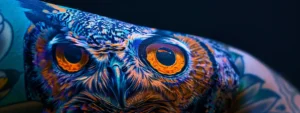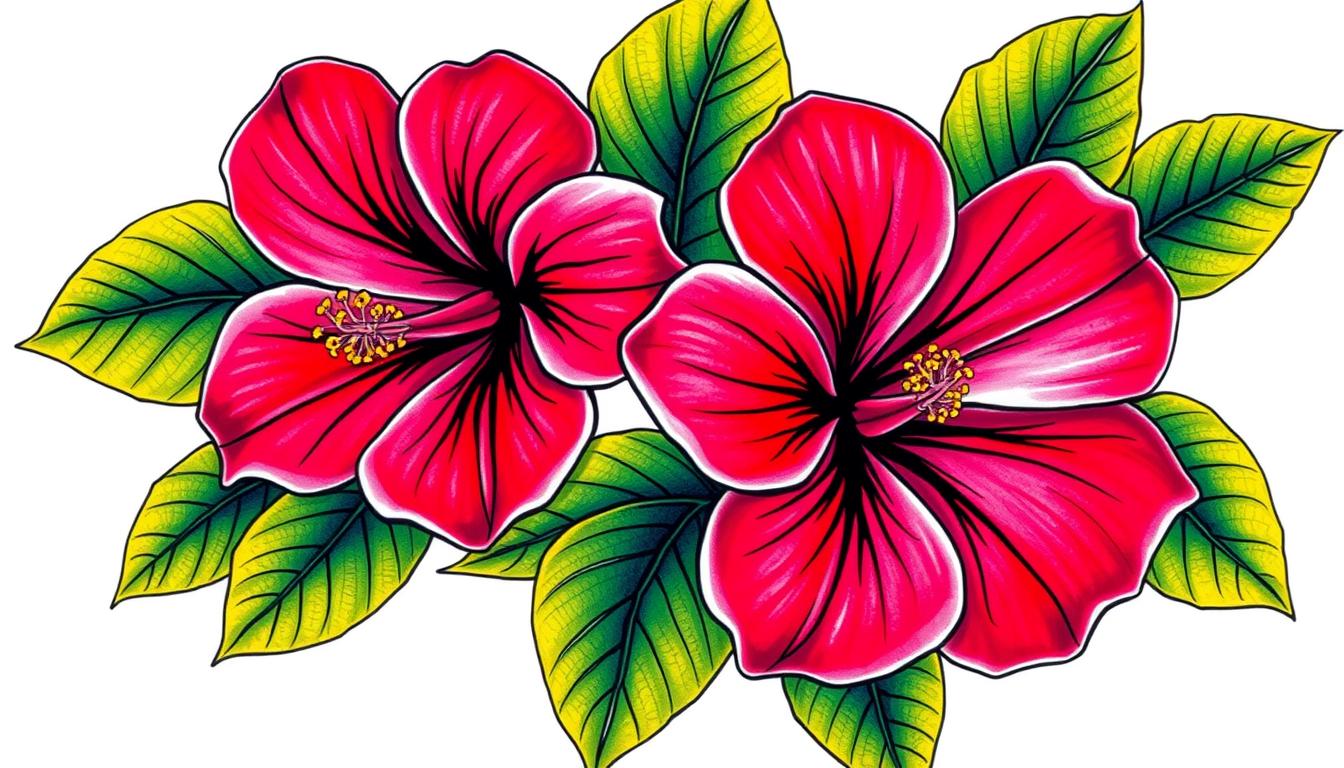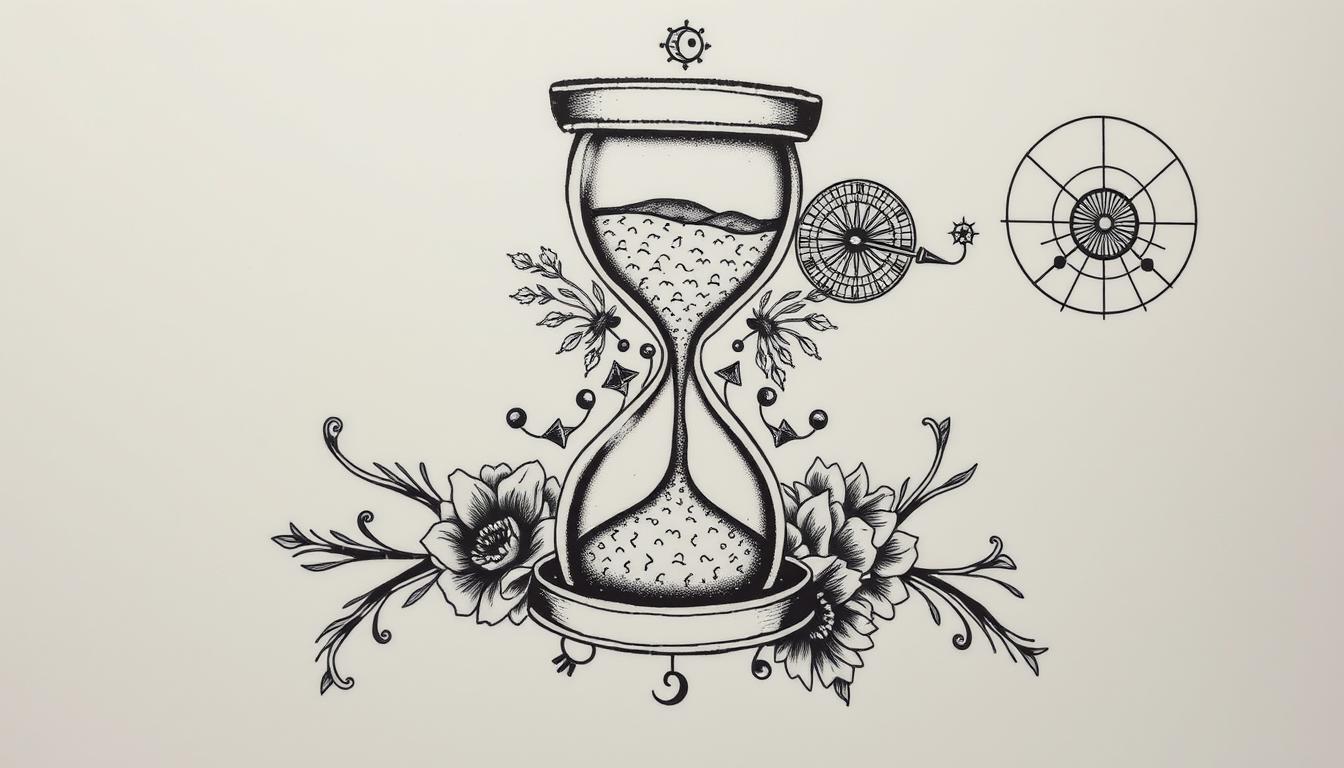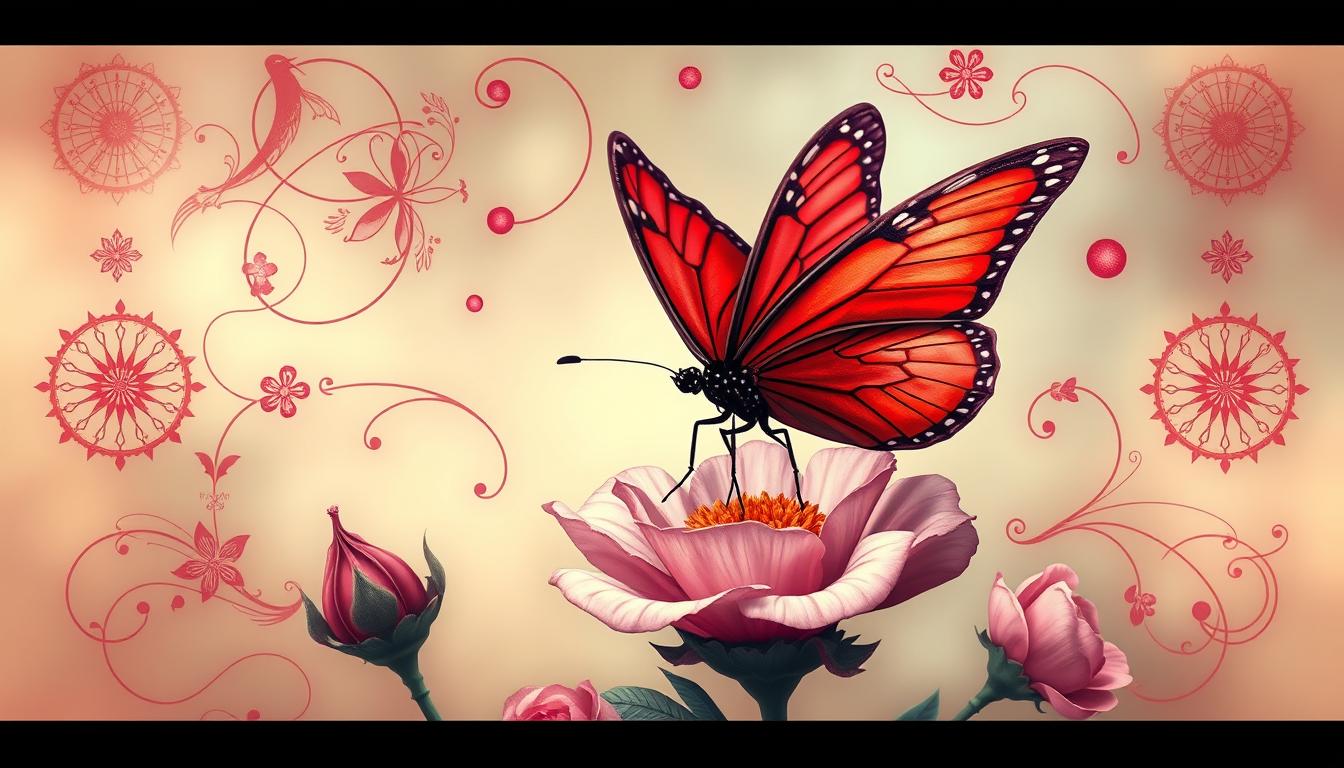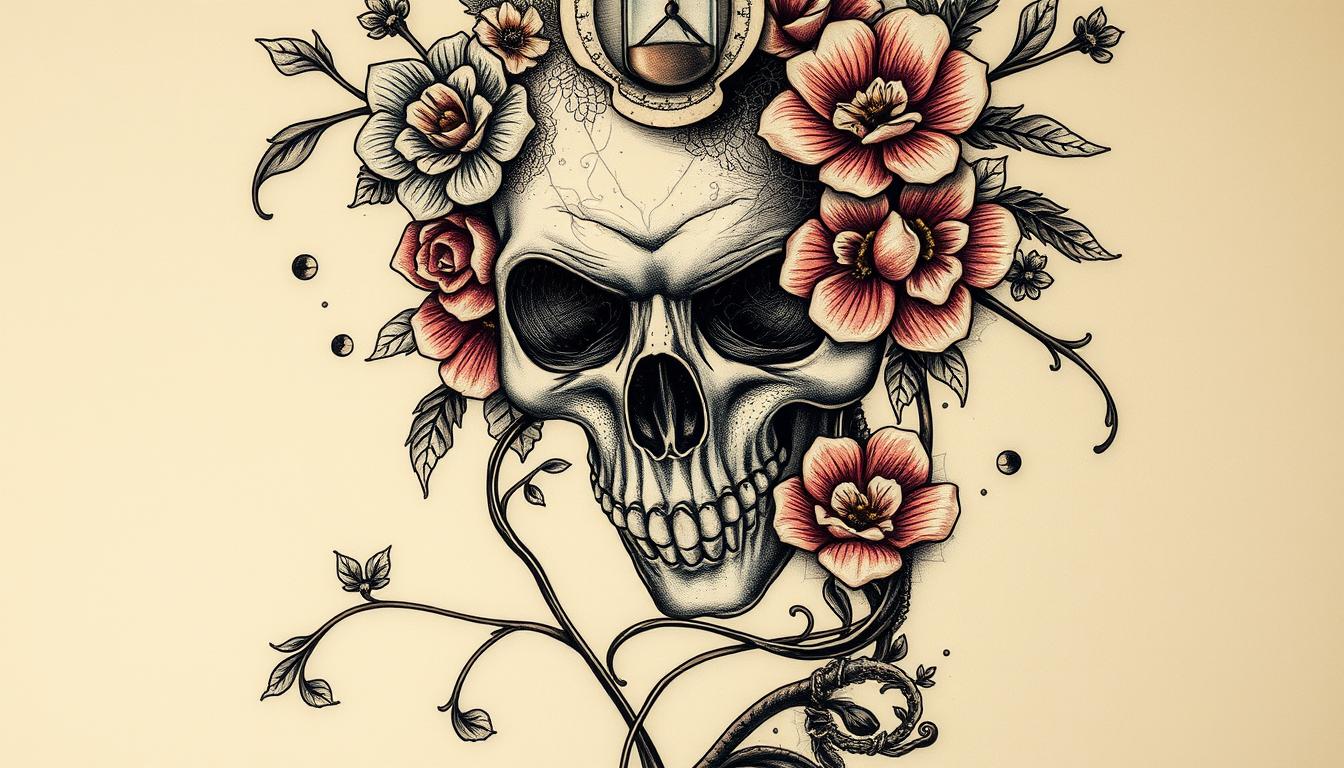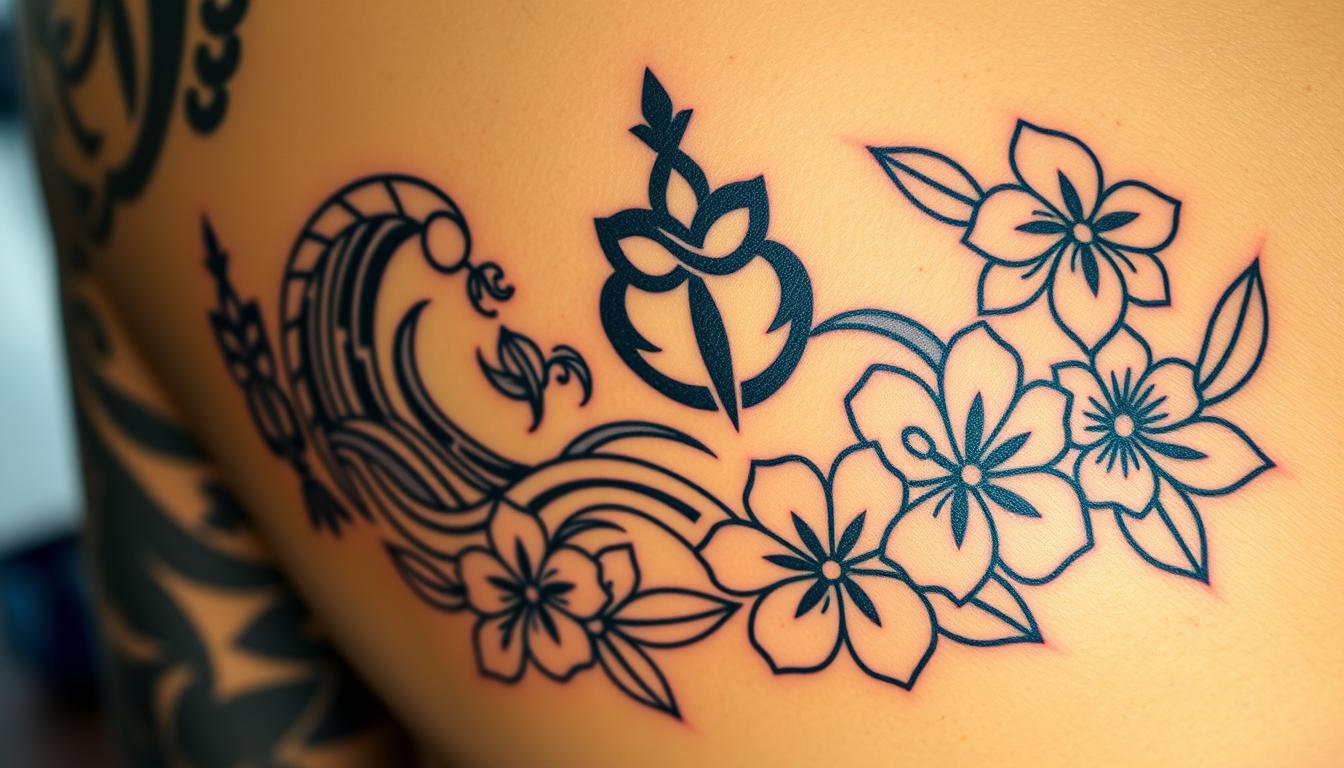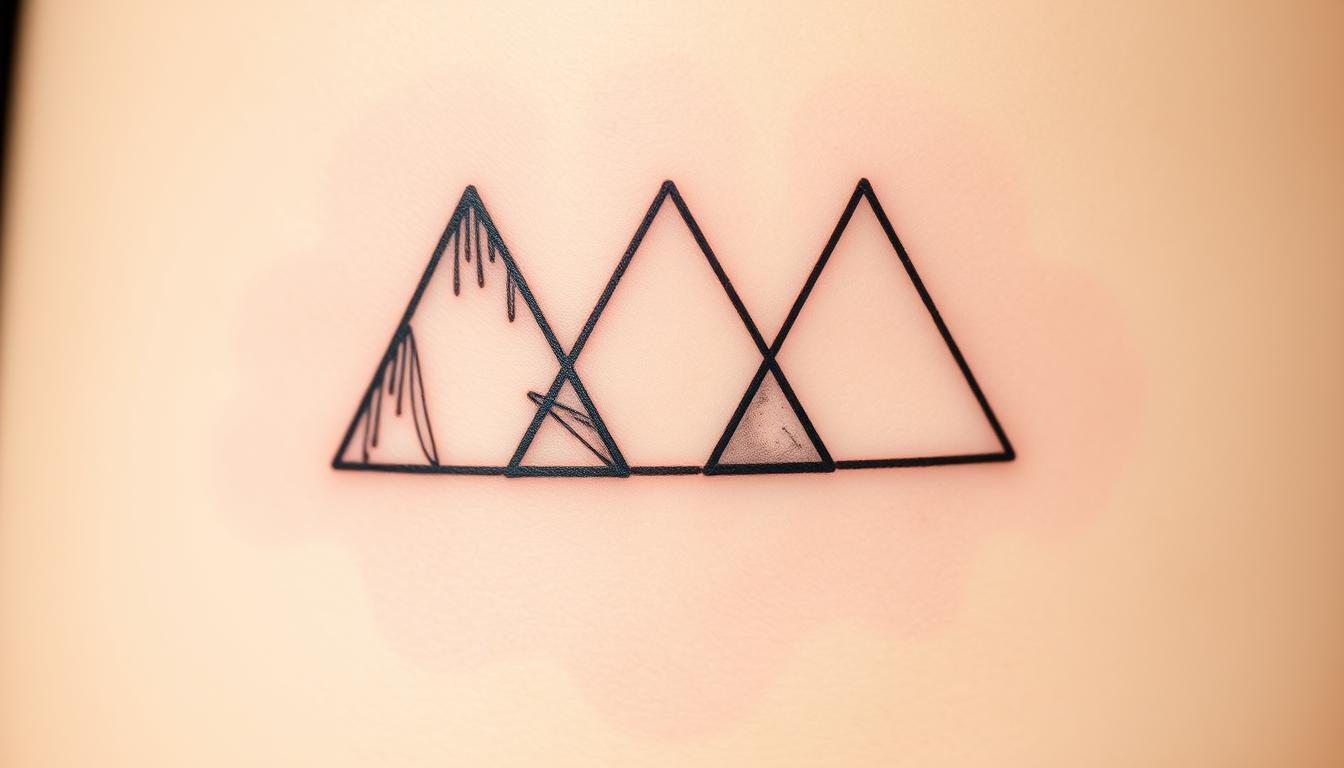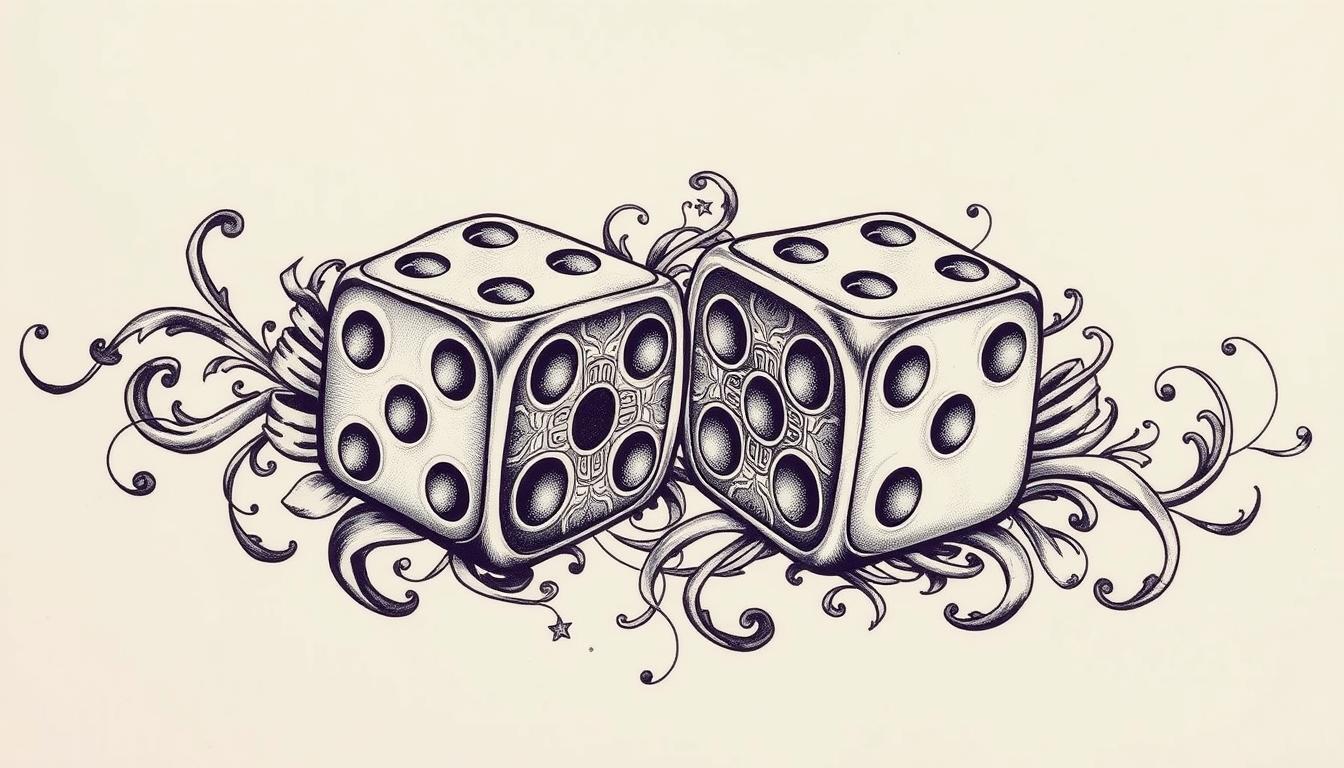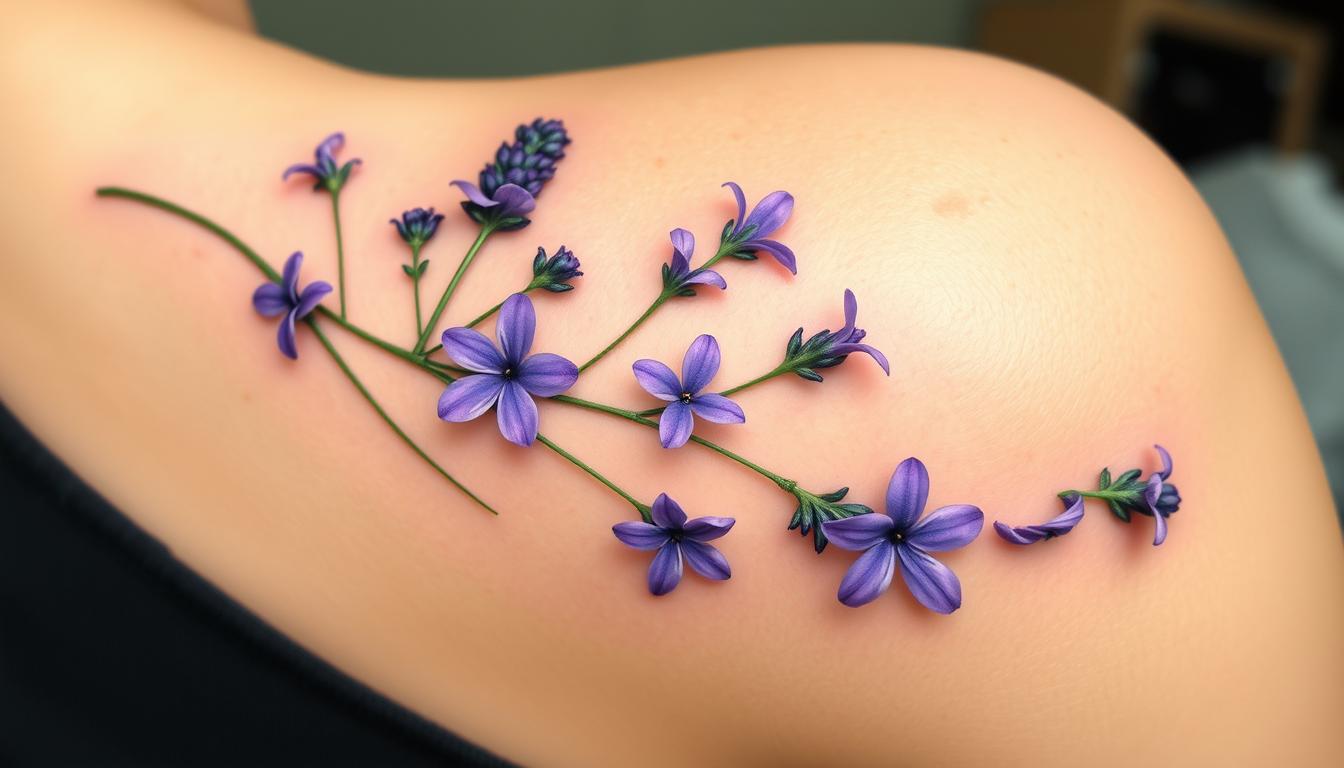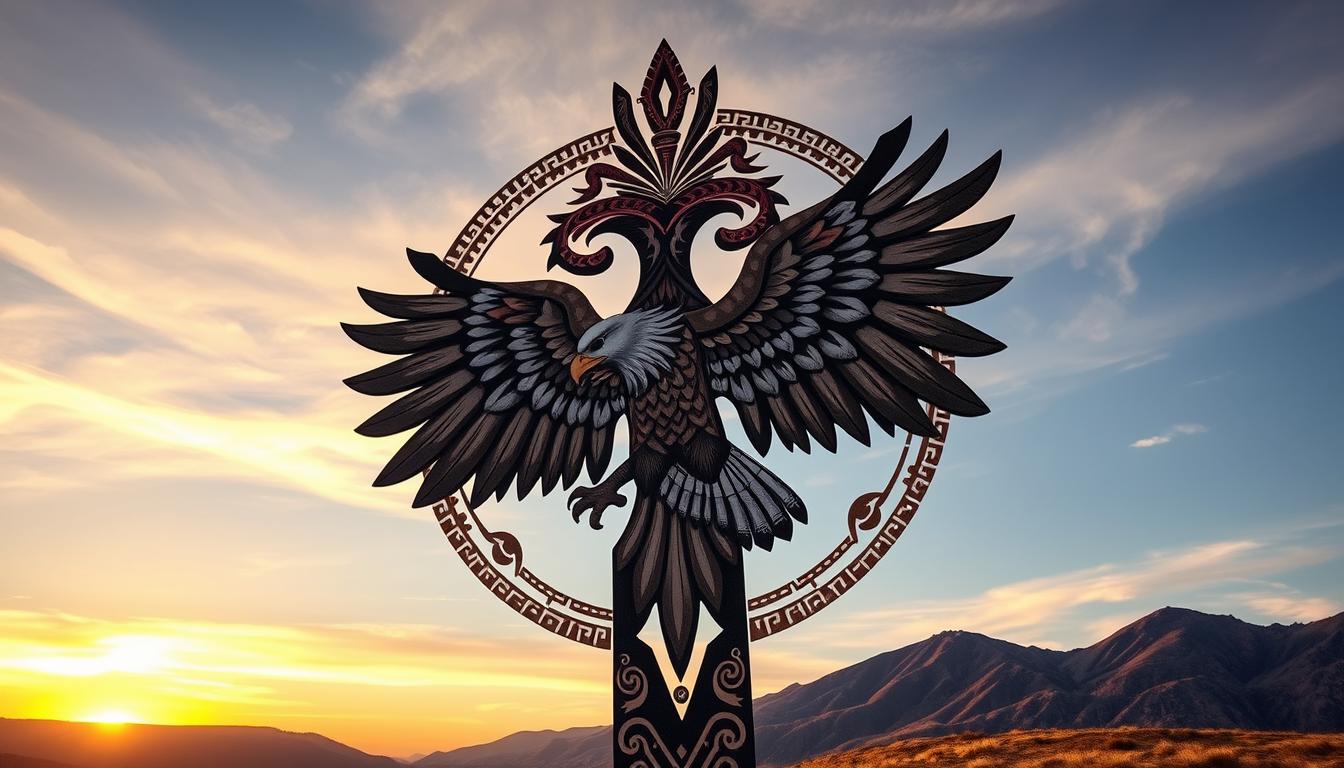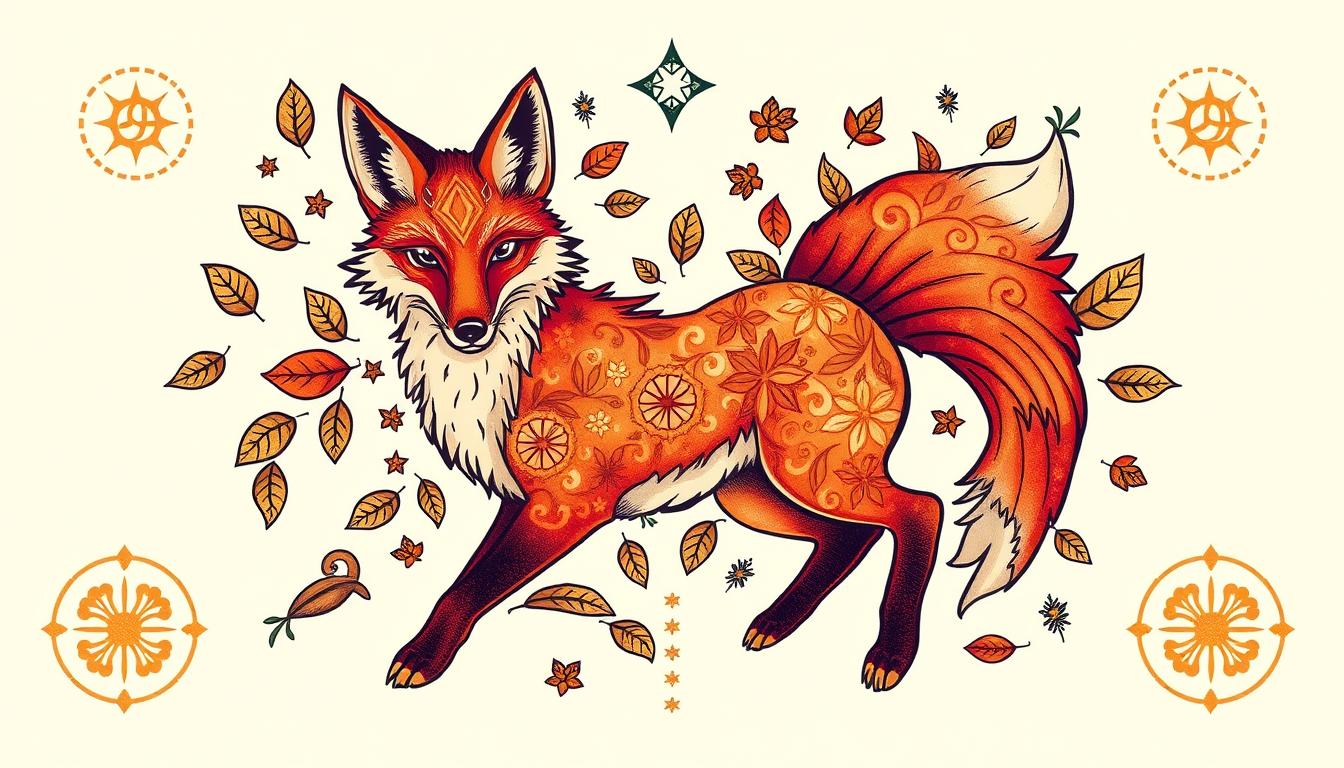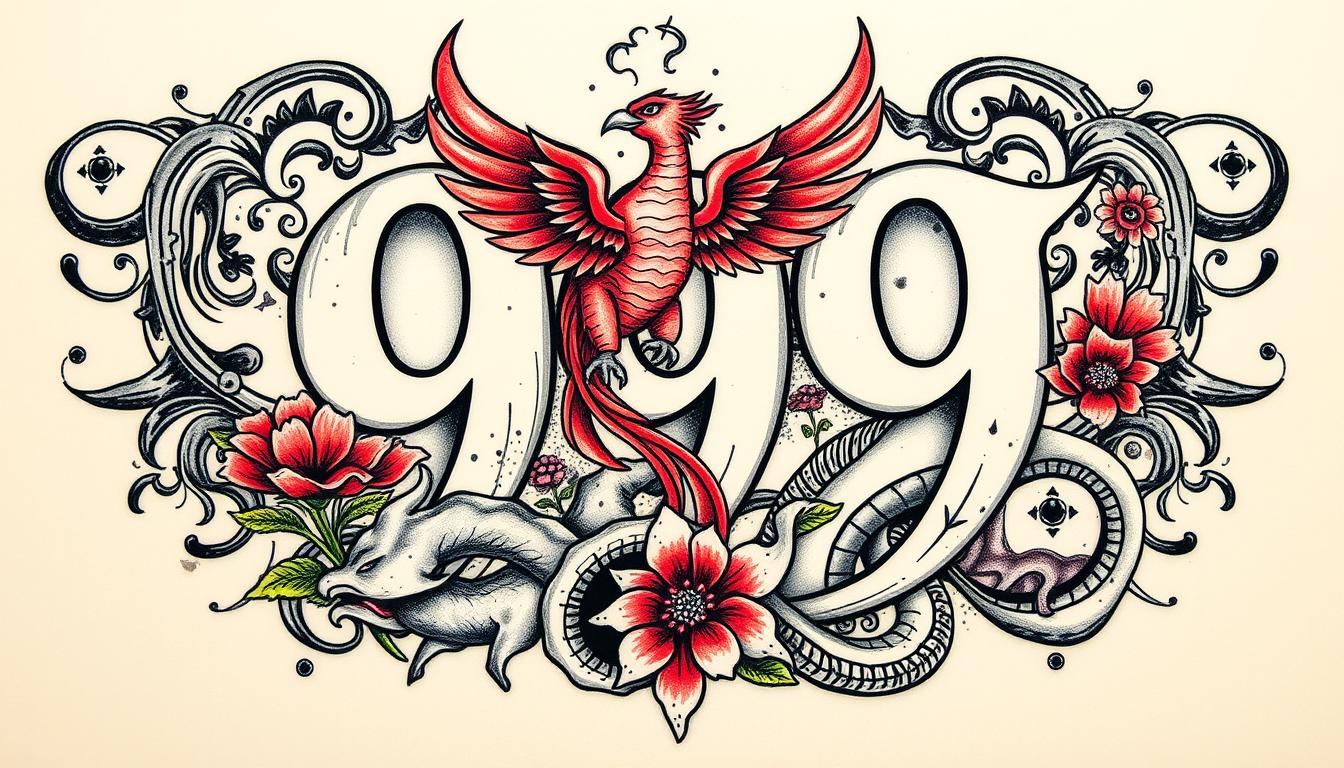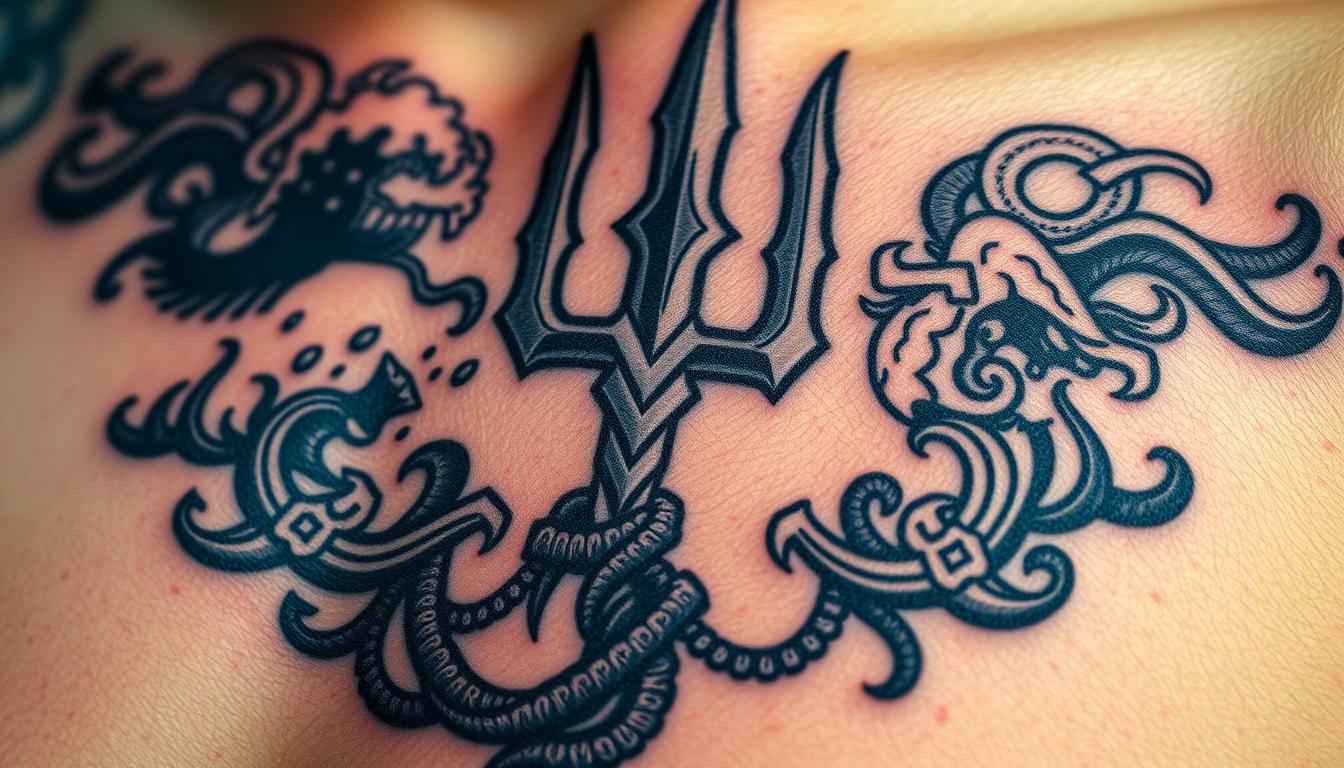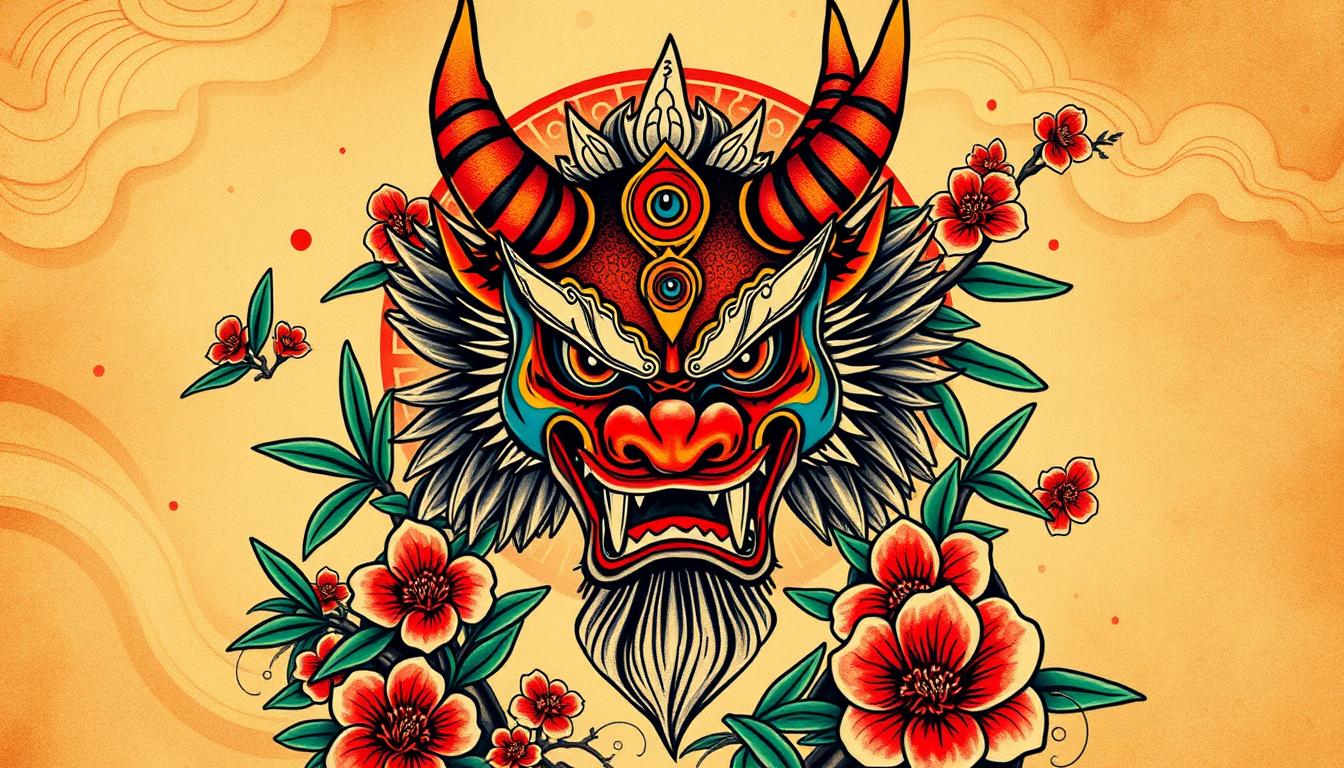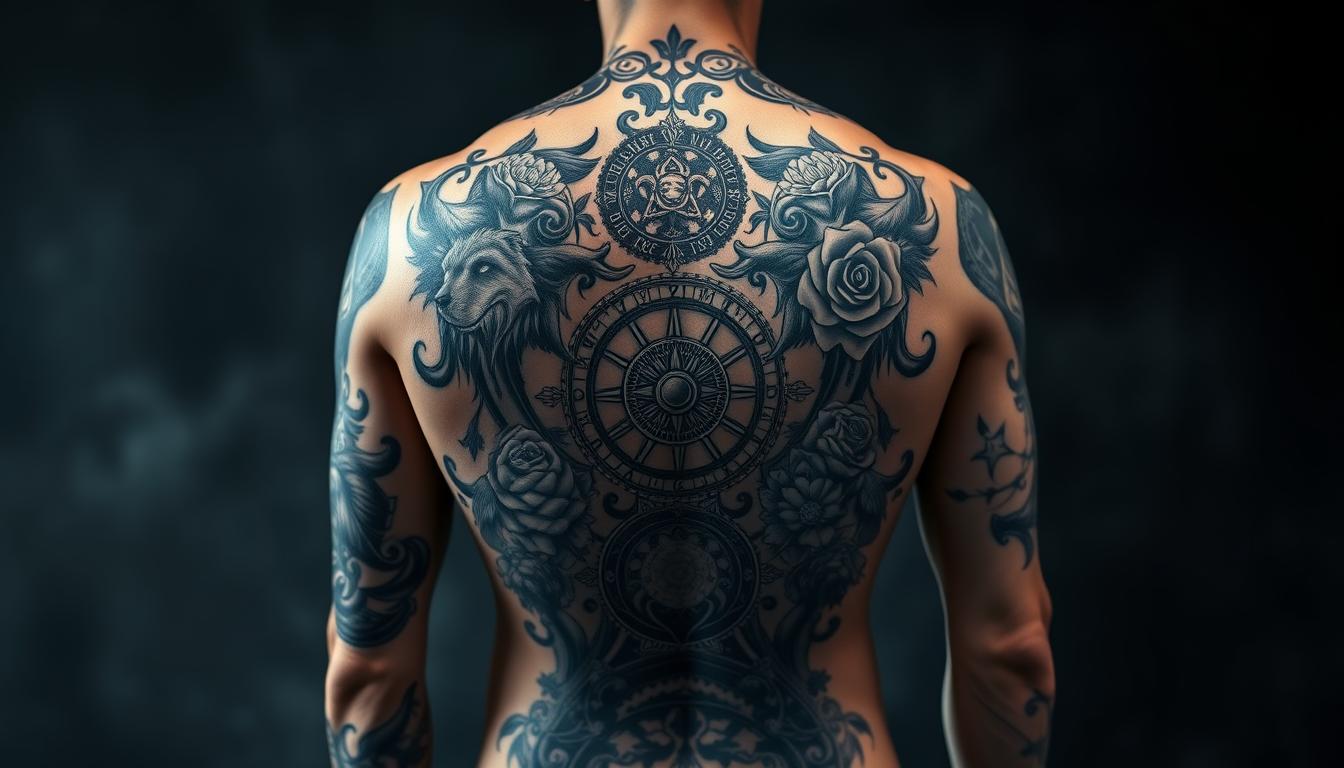Joker tattoos have become increasingly popular, but what do they really symbolize? This article explores the deeper meanings behind these enigmatic designs, from their cultural origins to their psychological significance. We’ll decode common interpretations, examine various styles, and discuss the influence of pop culture icons like Heath Ledger’s portrayal. Whether you’re considering a Joker tattoo or simply curious about their symbolism, this guide will provide valuable insights to help you understand the complex meanings behind these intriguing pieces of body art.
Key Takeaways
- The Joker symbol evolved from playing cards to complex cinematic portrayals, influencing tattoo designs
- Joker tattoos symbolize chaos, duality, and personal transformation, often incorporating elements from pop culture
- Color choices in Joker tattoos convey different aspects of the character’s personality and symbolism
- Heath Ledger and Jared Leto’s portrayals significantly influenced Joker tattoo designs and aesthetics
- Consider social perceptions, design personalization, artist skill, and long-term care when getting a Joker tattoo
Discovering the Origins of the Joker Symbol in Culture
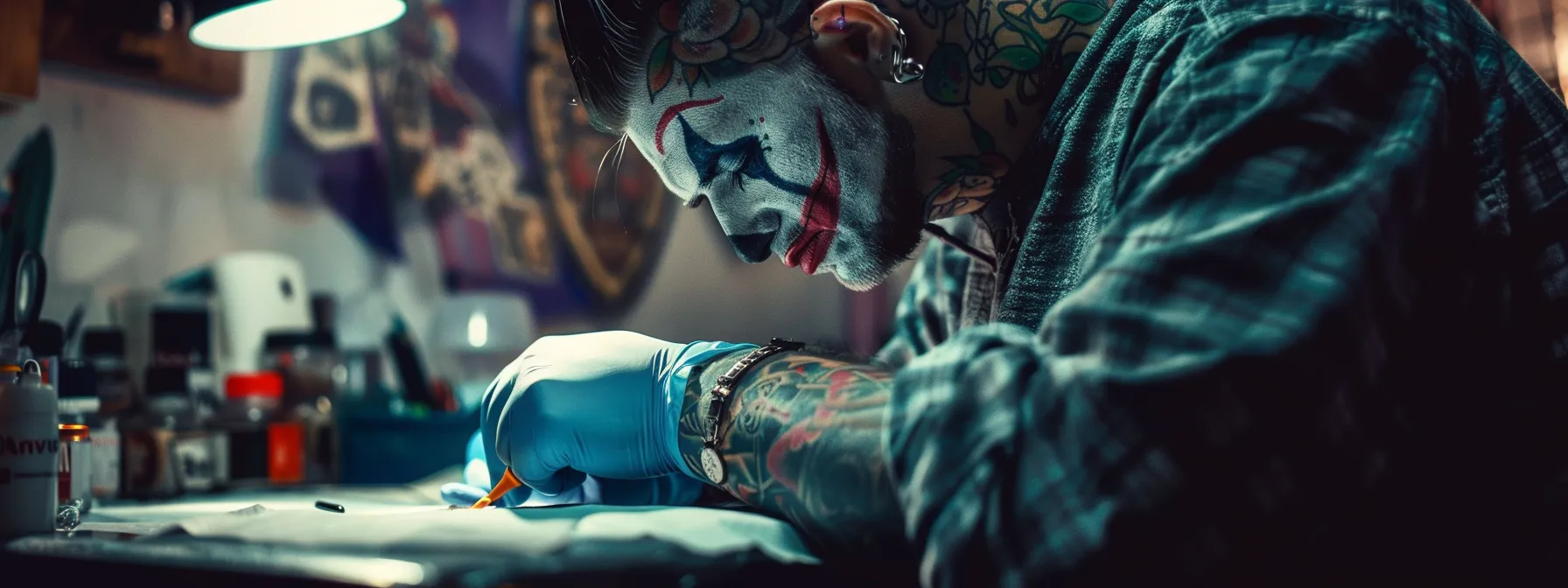
The Joker symbol’s origins in culture span literature, art, and playing cards. This iconic character evolved from a simple card game element to a complex figure in comics and cinema. The Joker’s portrayal in the United States has influenced tattoo designs, often incorporating themes of faith and chaos. Modern interpretations, like Suicide Squad, have further shaped the Joker’s symbolism in tattoo art.
Tracing the Joker’s Historical Role in Literature and Art
The Joker’s historical role in literature and art has evolved significantly over time, shaping the character’s narrative and visual representation. From its origins in playing cards to its portrayal in comics and cinema, the Joker has become a complex figure embodying chaos and unpredictability. The character’s evolution has influenced tattoo designs, with artists incorporating elements of realism and symbolism to create striking imagery on skin. This transformation is evident in the following table:
| Era | Medium | Representation |
|---|---|---|
| Early 1900s | Playing Cards | Simple jester figure |
| 1940s | Comics | Villainous character |
| 1960s-1980s | Television/Film | Campy antagonist |
| 1990s-2000s | Comics/Film | Dark, psychological villain |
| 2010s-Present | Film/Tattoo Art | Complex anti-hero (e.g., Joaquin Phoenix’s portrayal) |
Symbolism of the Joker in Playing Cards
In playing cards, the Joker symbolizes unpredictability and rebellion, traits that have made it a popular choice for tattoo designs. Tattoo artists often incorporate elements of humor and chaos into Joker-inspired pieces, reflecting the card’s role as a wild card in games. The Joker’s evolution in popular culture, from advertising mascots to Jared Leto’s portrayal in films, has further enriched its symbolism, making it a complex and intriguing subject for body art.
The Evolution of the Joker Character in Comics and Cinema
The Joker character has undergone a significant transformation in comics and cinema, evolving from a simple villain to a complex symbol of chaos and fear. This evolution has greatly influenced tattoo art, with artists incorporating elements such as the Joker’s iconic skull-like grin and unsettling smile into their designs. The character’s portrayal in films has further enriched its symbolism, making Joker tattoos a powerful form of self-expression that often represents a blend of darkness and artistry.
Decoding Common Interpretations of Joker Tattoo Designs

Joker tattoos embody complex meanings, from duality and chaos to personal identity and transformation. These designs often incorporate elements from comics, playing cards, and cinematic portrayals, including the iconic image of the Joker’s face. The symbolism can range from rebellion against societal norms to a reflection of inner turmoil, drawing inspiration from the Joker’s relationship with Batman and his role as a chaotic force.
Symbolizing Duality and Complexity With Joker Tattoos
Joker tattoos symbolize the duality and complexity inherent in popular culture, blending images of chaos and order. These designs often incorporate elements of luck and spirituality, reflecting the wearer’s perception of society and their place within it. The Joker’s multifaceted nature in tattoo art represents the intricate balance between conformity and rebellion, inviting viewers to contemplate the complexities of human nature and social norms.
Representing Chaos and Unpredictability Through Ink
Joker tattoos embody chaos and unpredictability, reflecting the complex interplay between good and evil in popular culture. These designs often incorporate elements that challenge societal norms, representing the wearer’s philosophical stance on mental health and the nature of villainy. The Joker’s unpredictable nature in tattoo form serves as a powerful symbol of the inherent chaos in life, inviting viewers to contemplate the fragile balance between order and disorder. Common elements used to represent this chaos include:
- Distorted playing cards
- Shattered mirrors
- Twisted clown faces
- Anarchic symbols
- Fragmented cityscape imagery
Reflecting Personal Identity and Rebellion
Joker tattoos often serve as powerful symbols of personal identity and rebellion, particularly when inked on visible areas like the forearm. These designs frequently draw inspiration from comic book depictions, incorporating iconic elements that resonate with individuals seeking to express their unconventional perspectives. The tattoo’s placement and style can convey a wearer’s desire to challenge societal norms, embracing the Joker’s chaotic nature as a reflection of their own complex identity.
Transformation Symbolism in Joker Imagery
Joker tattoos often symbolize personal transformation, reflecting the character’s fluid identity and unpredictable nature. These designs frequently incorporate elements of metamorphosis, such as distorted faces or shifting forms, to represent the wearer’s journey of self-discovery or adaptation to life’s challenges. The Joker’s ever-changing appearance in various media adaptations further reinforces this symbolism, making these tattoos a powerful expression of personal growth and the ability to reinvent oneself in the face of adversity.
Understanding the Psychological Significance of Choosing a Joker Tattoo
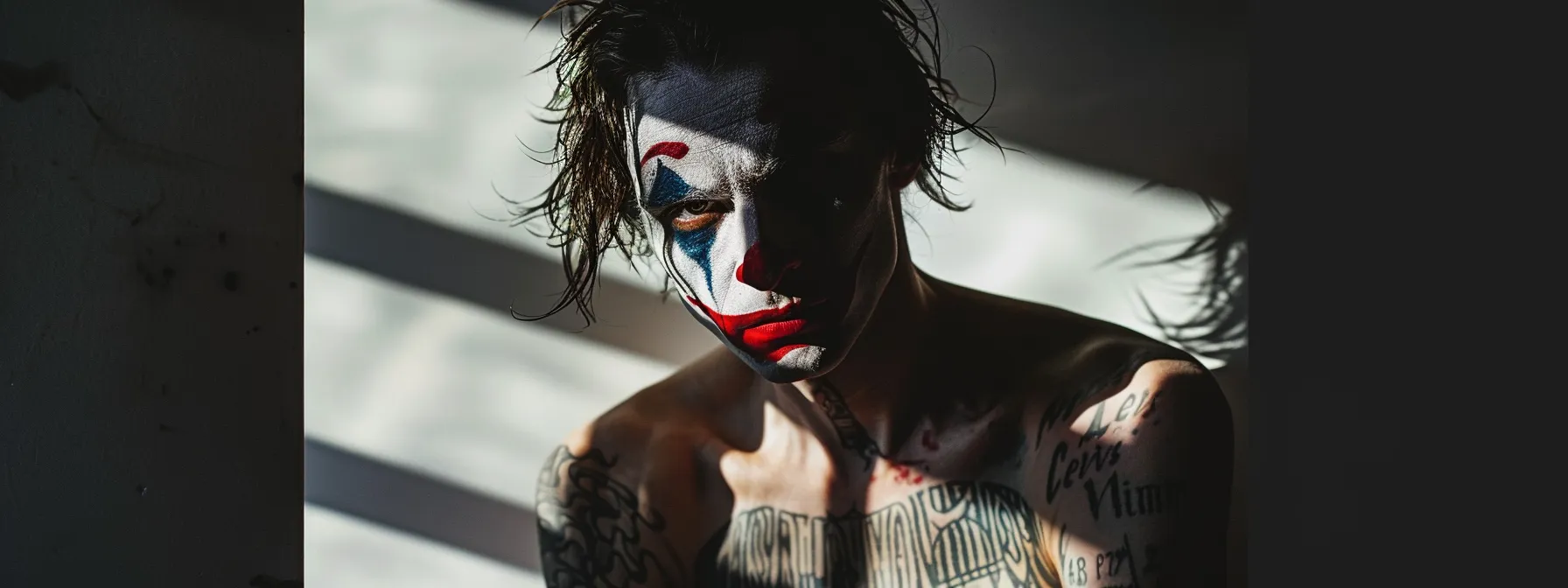
Choosing a Joker tattoo carries deep psychological significance. This section explores themes of anonymity and hidden personas, the expression of the shadow self through body art, and the allure of antiheroes in tattoo culture. Understanding these aspects provides insight into the complex motivations behind selecting this iconic symbol for permanent body art.
Themes of Anonymity and Hidden Personas
Joker tattoos often represent themes of anonymity and hidden personas, reflecting the wearer’s desire to conceal aspects of their identity or embrace a more complex self-image. These designs can symbolize the duality between one’s public face and private thoughts, mirroring the Joker’s ability to blend into society while harboring chaotic intentions. The popularity of such tattoos may indicate a fascination with the concept of maintaining multiple identities or a rebellion against societal expectations of transparency. This psychological allure is evident in the various representations of the Joker character:
| Joker Representation | Hidden Persona Theme | Psychological Significance |
|---|---|---|
| Classic Playing Card Joker | Masked Jester | Concealment of true intentions |
| Comic Book Joker | Criminal Mastermind | Intelligence hidden behind chaos |
| Heath Ledger’s Joker | Anarchist Philosopher | Profound ideas masked by madness |
| Joaquin Phoenix’s Joker | Societal Outcast | Inner turmoil behind a smile |
Expressing the Shadow Self Through Body Art
Joker tattoos often serve as a means of expressing the shadow self, a concept developed by Carl Jung to describe the unconscious aspects of one’s personality. These tattoos allow individuals to externalize their darker thoughts, repressed emotions, or societal taboos through visual representation on their skin. By choosing the Joker as a symbol, wearers may be acknowledging and integrating these hidden aspects of themselves, rather than suppressing them. This form of body art can act as a cathartic release, enabling individuals to confront and accept parts of their psyche that they might otherwise struggle to acknowledge or express openly.
The Allure of Antiheroes and Villains in Tattoo Culture
The allure of antiheroes and villains in tattoo culture stems from their complex nature and ability to challenge societal norms. Joker tattoos, in particular, represent a fascination with characters who exist outside conventional morality, allowing wearers to express their own rebellious or unconventional attitudes. This trend reflects a broader cultural shift towards embracing flawed characters, as they often provide a more nuanced and relatable representation of the human experience.
Variations in Joker Tattoo Styles and Their Meanings

Joker tattoo designs vary widely, reflecting different artistic styles and symbolic meanings. This section explores traditional and modern Joker designs, color symbolism, playing card and harlequin motifs, and the choice between minimalist and detailed styles. Each variation offers unique ways to express the complex symbolism associated with the Joker character.
Comparing Traditional and Modern Joker Designs
Traditional Joker tattoo designs often draw inspiration from classic playing cards and early comic book depictions, featuring bold lines and vivid colors. These designs typically emphasize the character’s jester-like qualities and mischievous nature. In contrast, modern Joker tattoos incorporate elements from contemporary film and graphic novel interpretations, showcasing a darker, more complex character. These designs frequently utilize realistic portraiture techniques and intricate shading to capture the psychological depth of recent Joker portrayals, such as those by Heath Ledger or Joaquin Phoenix.
Color Symbolism in Joker Tattoos
Color symbolism plays a significant role in Joker tattoos, enhancing their meaning and visual impact. The traditional green and purple palette associated with the character often represents chaos and royalty, respectively. However, modern interpretations have expanded the color range to include darker hues like black and red, symbolizing the character’s more sinister aspects. Artists may also incorporate skin tone or negative space to create contrast and depth, further emphasizing the Joker’s complex nature. The choice of colors in a Joker tattoo can reflect various aspects of the character’s personality:
- Green: Chaos, envy, poison
- Purple: Royalty, madness, mystery
- Red: Violence, passion, danger
- Black: Darkness, despair, the unknown
- White: Insanity, unpredictability, the void
Incorporating Playing Cards and Harlequin Motifs
Joker tattoos often incorporate playing cards and harlequin motifs to enhance their symbolic depth. These elements draw from the character’s origins in card decks and his jester-like appearance, adding layers of meaning to the design. Artists frequently combine the Joker card with other symbolic cards, such as the Ace of Spades or the Queen of Hearts, to create complex narratives within the tattoo. The harlequin’s diamond pattern and theatrical masks are also popular additions, representing duality and deception. These motifs can be incorporated in various ways:
- Joker card emerging from a deck
- Harlequin patterns forming the Joker’s costume
- Playing card suits integrated into the Joker’s face
- Theatrical masks morphing into the Joker’s visage
- Card edges framing the overall design
Selecting Between Minimalist and Detailed Artistic Styles
Selecting between minimalist and detailed artistic styles for Joker tattoos depends on personal preference and the intended symbolism. Minimalist designs often feature simple lines or iconic elements, such as the Joker’s smile or playing card silhouette, conveying the character’s essence with subtlety. Detailed styles, conversely, incorporate intricate shading, realistic portraits, or complex scenes from comics and films, allowing for a more comprehensive representation of the Joker’s multifaceted nature. The choice between these styles can reflect the wearer’s interpretation of the character and their desired level of visual impact:
- Minimalist: Subtle symbolism, easier to conceal
- Detailed: Rich storytelling, more visually striking
- Hybrid: Combining elements of both for a unique design
- Watercolor: Blending minimalism with artistic flair
- Abstract: Interpreting the Joker’s chaos through non-representational art
Influence of Pop Culture on Joker Tattoo Symbolism
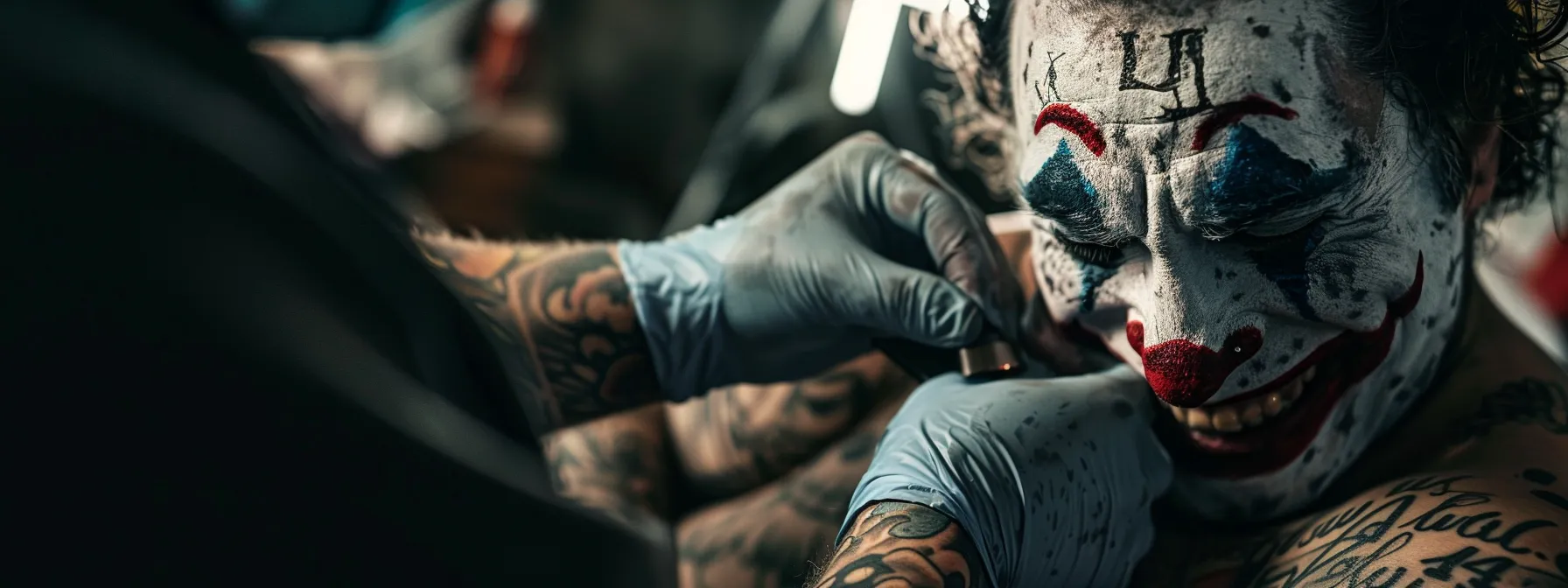
Pop culture has significantly shaped Joker tattoo symbolism. Heath Ledger’s portrayal influenced dark, realistic designs, while Jared Leto’s interpretation inspired modern, edgy tattoos. Harley Quinn and Joker couple tattoos represent complex relationships. Iconic quotes in designs add depth and personal meaning. These elements reflect the Joker’s evolving cultural impact on body art.
Impact of Heath Ledger’s Joker on Tattoo Art
Heath Ledger’s portrayal of the Joker in “The Dark Knight” revolutionized Joker tattoo designs, introducing a darker, more realistic aesthetic. His interpretation inspired tattoos featuring smeared makeup, scars, and the iconic “Why so serious?” catchphrase. Artists began incorporating elements of psychological depth and moral ambiguity into their designs, reflecting the character’s complex nature. This shift in tattoo artistry mirrored the evolving perception of the Joker in popular culture, as seen in the following table:
| Pre-Ledger Joker Tattoos | Post-Ledger Joker Tattoos |
|---|---|
| Cartoonish, colorful designs | Gritty, realistic portraits |
| Focus on humor and mischief | Emphasis on psychological depth |
| Comic book style illustrations | Photorealistic depictions |
| Bright, vibrant color schemes | Muted, darker color palettes |
Contemporary Interpretations Inspired by Jared Leto’s Joker
Jared Leto’s portrayal of the Joker in “Suicide Squad” introduced a new aesthetic to Joker tattoo designs. His interpretation inspired tattoos featuring metallic grills, neon colors, and street-style artwork. Artists began incorporating elements of urban culture and modern fashion into their designs, reflecting the character’s edgier, more contemporary appearance. This shift in tattoo artistry mirrors the evolving perception of the Joker in popular culture, blending traditional symbolism with modern visual elements.
Symbolism in Harley Quinn and Joker Couple Tattoos
Harley Quinn and Joker couple tattoos symbolize complex relationships and the duality of love and chaos. These designs often incorporate elements from both characters, such as playing cards, diamonds, and their iconic colors. The popularity of these tattoos reflects the cultural fascination with toxic relationships and the romanticization of antiheroes in modern media. Common themes in Harley Quinn and Joker couple tattoos include:
- Intertwined hearts with chaotic elements
- Split-face designs combining both characters
- “Mad Love” text or imagery
- Matching card suits or jester motifs
- Contrasting color schemes representing each character
Including Iconic Quotes and Lines in Your Design
Incorporating iconic quotes and lines in Joker tattoo designs adds depth and personal meaning to the artwork. Popular choices include “Why so serious?” from The Dark Knight and “We’re all clowns” from Joker (2019). These quotes often accompany visual elements, creating a powerful combination of imagery and text that resonates with the wearer’s interpretation of the character. The inclusion of such lines can transform a simple design into a more complex statement, reflecting the Joker’s philosophical impact on popular culture:
| Quote | Source | Symbolism |
|---|---|---|
| “Why so serious?” | The Dark Knight (2008) | Chaos, unpredictability |
| “We’re all clowns” | Joker (2019) | Social commentary, rebellion |
| “Madness is like gravity” | The Dark Knight (2008) | Inevitability of chaos |
| “Smile, because it confuses people” | The Killing Joke (Comic) | Deception, hidden emotions |
Considerations Before Getting a Joker Tattoo
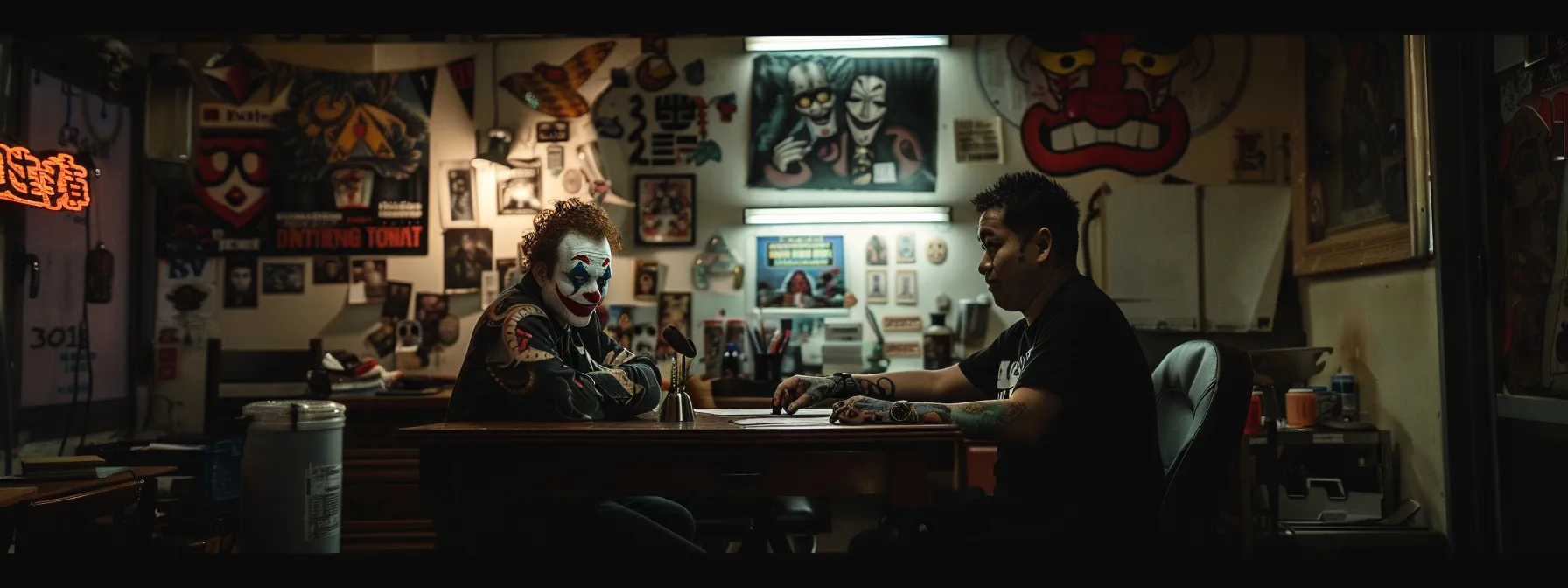
Before getting a Joker tattoo, several factors require careful consideration. These include understanding social perceptions and meanings associated with the symbol, personalizing tattoo placement and design, selecting a skilled artist for complex designs, and planning for long-term care and maintenance. Each aspect plays a crucial role in ensuring satisfaction with the final result and its enduring significance.
Social Perceptions and Meanings
Social perceptions of Joker tattoos vary widely, with some viewing them as symbols of rebellion and others as indicators of antisocial tendencies. The meaning attributed to these tattoos can impact personal and professional relationships, potentially influencing job prospects or social interactions. Individuals considering a Joker tattoo should carefully weigh the potential consequences and be prepared to explain their choice, as the symbol’s complex nature often invites questions or assumptions about the wearer’s personality or beliefs.
Personalizing Tattoo Placement and Design
Personalizing tattoo placement and design is crucial when considering a Joker tattoo. The location on the body can significantly impact the tattoo’s visibility and meaning, with more visible areas like the forearm or neck making a bolder statement than hidden spots. The design itself should reflect the individual’s interpretation of the Joker character, incorporating elements that resonate with their personal experiences or values. Artists can blend traditional Joker imagery with custom elements to create a unique piece that holds special significance for the wearer.
Choosing a Skilled Artist for Complex Designs
Selecting a skilled artist is crucial for complex Joker tattoo designs. An experienced tattoo artist can accurately capture the intricate details, shading, and color work often required in Joker-inspired pieces. They can also provide valuable input on design elements that will translate well to skin and maintain their quality over time. Prospective clients should research portfolios, read reviews, and consult with multiple artists to find someone who specializes in the specific style they desire for their Joker tattoo.
Long-Term Care and Maintenance of Your Tattoo
Long-term care and maintenance are crucial for preserving the quality and vibrancy of a Joker tattoo. Regular moisturizing and sun protection help prevent fading and distortion of the intricate details often found in these designs. As Joker tattoos frequently incorporate bright colors and fine lines, touch-ups may be necessary every few years to maintain their striking appearance. Proper aftercare during the healing process, including following the artist’s instructions for cleaning and avoiding excessive sun exposure, sets the foundation for a long-lasting, visually impactful tattoo.
Conclusion
Joker tattoos embody complex symbolism, reflecting themes of chaos, duality, and rebellion in popular culture. These designs draw inspiration from various sources, including literature, art, comics, and cinema, evolving alongside the character’s portrayal in media. The psychological significance of choosing a Joker tattoo often relates to expressing hidden personas, the shadow self, or an affinity for antiheroes. Understanding the various styles, meanings, and cultural influences behind Joker tattoos is crucial for those considering this powerful form of self-expression, ensuring the chosen design aligns with personal values and societal perceptions.



